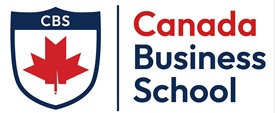Experiential Learning in Canadian Business Schools

Experiential Learning in Canadian Business Schools
Experiential learning is a cornerstone of education in Canadian business schools, designed to bridge the gap between theoretical concepts taught in classrooms and real-world applications in business environments. It encompasses a range of innovative methods that actively engage students by immersing them in experiences that simulate or connect directly to the dynamics of business practice. This approach ensures students graduate not only with strong academic foundations, but also with practical skills that prepare them for leadership roles in competitive, rapidly changing industries.
What is Experiential Learning?
Experiential learning focuses on “learning by doing.” It encourages students to:
- Apply theoretical knowledge in practical scenarios.
- Reflect on their decisions, actions, and results.
- Cultivate problem-solving skills in real-world business contexts.
- Build professional networks through hands-on exposure to industries.
This approach is essential for preparing students to tackle challenges in dynamic environments, enhancing their adaptability and leadership potential.
Components of Experiential Learning in Business Education
Canadian business schools implement experiential learning through a variety of elements. Below are the key components:
1. Case Study Analysis
- Case studies allow students to analyze real-world business problems faced by companies.
- Example: Ivey Business School uses the world-renowned case-based learning method, where students learn to address complex business situations and make data-driven decisions.
2. Internships and Co-Op Placements
- Many Canadian business schools integrate internships and co-op programs into their curricula, allowing students to work with leading organizations.
- Example: The Rotman School of Management (University of Toronto) collaborates with global firms like Deloitte, Google, and RBC to provide paid internship opportunities for MBA students.
3. Consulting Projects
- Students are assigned client-facing projects for real organizations to solve business problems, offering experience similar to consulting work.
- Example: Sauder School of Business (University of British Columbia) includes Global Immersion Projects, allowing students to tackle international challenges through consultancy-style engagements.
4. Startup Incubators and Accelerators
- Entrepreneurship-focused students gain hands-on experience by launching their own ventures while supported by school-affiliated incubators and accelerators.
- Example: Rotman Creative Destruction Lab provides mentorship, workshops, and funding opportunities for student entrepreneurs.
5. Industry Partnerships
- Business schools form alliances with corporations to deliver corporate-sponsored projects and workshops that directly address industry needs.
- Example: The Smith School of Business (Queen’s University) engages students with its Corporate Connections Center, fostering collaboration between students and businesses for tailored industry-learning opportunities.
6. Case Competitions
- Students participate in national and international case competitions, where they tackle real-world challenges and present solutions to executives.
- Example: The annual MBA Games, hosted in Canada, provide students the opportunity to showcase their problem-solving acumen on a competitive stage.
7. Real-Time Simulations
- Simulations replicate business environments, allowing students to analyze data, make decisions, and observe the outcomes in a controlled setup.
- Example: Tools like Markstrat or Capsim are extensively used in Canadian business schools for strategic decision-making simulations.
8. International Exchange Programs
- These programs offer students global exposure by immersing them in international markets and business environments.
- Example: Schulich School of Business (York University) offers exchange programs with partner schools in over 20 countries.
9. Social Impact Projects
- Canadian business schools encourage students to take part in social enterprise projects or nonprofit consultancy, equipping them with lessons on sustainable and ethical leadership.
- Example: Programs like the Reaching Out MBA Fellowship address diversity and inclusion by involving students in hands-on impact initiatives.
10. Networking Opportunities
- Experiential learning events such as alumni panels, career fairs, and industry workshops enable students to connect with professionals and industry leaders.
- This component contributes to real-world readiness by linking classroom knowledge to career growth.
Key Benefits of Experiential Learning
-
Professional Skill Development
- Students gain practical experience with business tools, data analysis platforms, and strategic decision-making processes, ensuring they are job-ready upon graduation.
-
Building Networks
- By working directly with industry leaders during projects and placements, students develop critical professional connections.
-
Enhanced Problem-Solving
- Experiential learning challenges students to find creative, actionable solutions to complex business problems.
-
Global Competency
- Programs with international focus ensure students develop cultural intelligence and global business acumen.
-
Entrepreneurial Acumen
- Startup incubators help budding entrepreneurs turn innovative ideas into actionable business plans, backed by mentorship and funding.
Challenges in Experiential Learning
While experiential learning delivers substantial value, it also comes with challenges:
-
Coordination with External Partners
- Securing partnerships that align with student skills and program goals can be complex.
-
Ensuring Universal Relevance
- Experiences like international projects may not always apply to certain local industries without adapting content.
-
Resource-Intensive Implementation
- Programs like incubators, simulations, or case competitions require significant funding and faculty involvement.
-
Balancing Theory and Practice
- Schools must strike a balance between experiential opportunities and foundational academic theory to ensure holistic learning.
Examples of Experiential Learning in Leading Canadian Business Schools
Rotman School of Management (University of Toronto)
- Creative Destruction Lab for entrepreneurship.
- Global management internships.
Ivey Business School
- Case-based teaching model.
- Leadership under competing priorities simulation.
UBC Sauder School of Business
- Global Immersion Projects for solving real-world business challenges worldwide.
Schulich School of Business
- International exchange programs and co-op experiences.
- Consulting case courses.
Smith School of Business
- Corporate partnerships for solving industry-specific problems.
- Case competitions and co-op placements.
Telfer School of Management (University of Ottawa)
- Community-focused consulting projects.
- Leadership development sessions.
Future of Experiential Learning
The future will see technology-enabled experiential learning like AI-driven simulations, virtual case studies, and gamified business environments. Increased emphasis on ethical leadership, sustainability, and inclusivity will redefine experiential learning in Canadian business schools.
In summary, experiential learning in Canadian business schools ensures students leave with actionable skills, leadership attributes, and meaningful industry connections, positioning them for success in an increasingly dynamic business environment.
